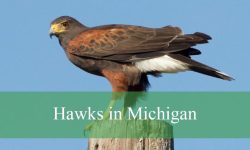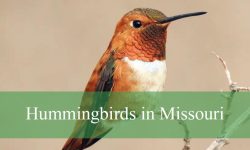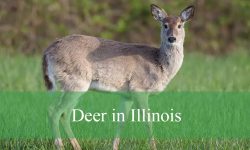Oregon’s vast forests, rugged mountains, and mixed woodlands provide an ideal home for a remarkable variety of woodpeckers. From the small and agile Downy Woodpecker to the powerful Pileated Woodpecker, these birds are found in nearly every corner of the state. Their rhythmic drumming and bright plumage make them one of Oregon’s most captivating bird groups.
Each species plays a vital role in maintaining forest health by controlling insects and creating nesting cavities for other wildlife. Some, like the Red-breasted and Red-naped Sapsuckers, even contribute to the ecosystem by feeding other birds through their sap wells. Whether in dense pine forests or suburban backyards, woodpeckers bring life and energy to Oregon’s natural landscapes.
In this guide, you’ll learn about 13 fascinating woodpecker species found in Oregon. We’ll explore their appearance, size, behavior, and preferred habitats — helping you identify each one and appreciate their unique adaptations to life in the Pacific Northwest.
Different Types of Woodpeckers Found in Oregon
Downy Woodpecker (Dryobates pubescens)
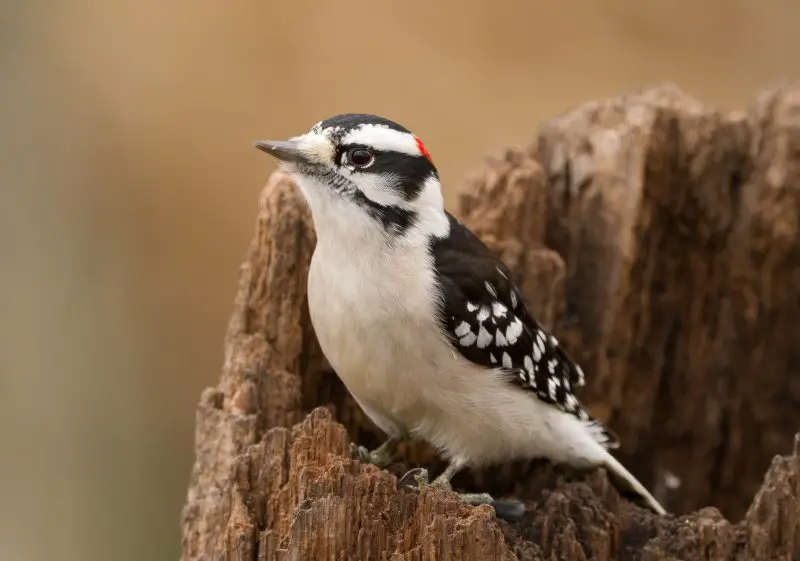
The Downy Woodpecker is the smallest and one of the most common woodpeckers found throughout Oregon. Measuring about 6 to 7 inches in length, this petite bird displays a striking black-and-white plumage with a white underside and checkered wings. Males have a tiny red patch on the back of their heads, while females lack this marking. Its short, stubby bill is noticeably smaller than that of the similar-looking Hairy Woodpecker.
Downy Woodpeckers can be seen in a wide variety of habitats, including deciduous forests, woodlots, river groves, and even suburban backyards. They are frequent visitors to suet feeders during winter and often perch on tree trunks or branches in a vertical position. Their ability to thrive in urban and rural areas alike makes them one of the most adaptable woodpeckers in the Pacific Northwest.
Behaviorally, these birds are active and curious. They feed primarily on insects such as beetle larvae, ants, and caterpillars, which they extract from tree bark using their strong bills. They also consume berries and seeds, especially during the colder months when insects are scarce. Their drumming sound, created by tapping rapidly on wood, is used to attract mates and establish territory.
In Oregon, the Downy Woodpecker is commonly found in both western lowlands and the eastern forests. They prefer mixed habitats where deciduous and coniferous trees coexist. Their small size allows them to exploit smaller branches and twigs that larger woodpeckers cannot access, giving them a unique ecological niche.
Hairy Woodpecker (Dryobates villosus)
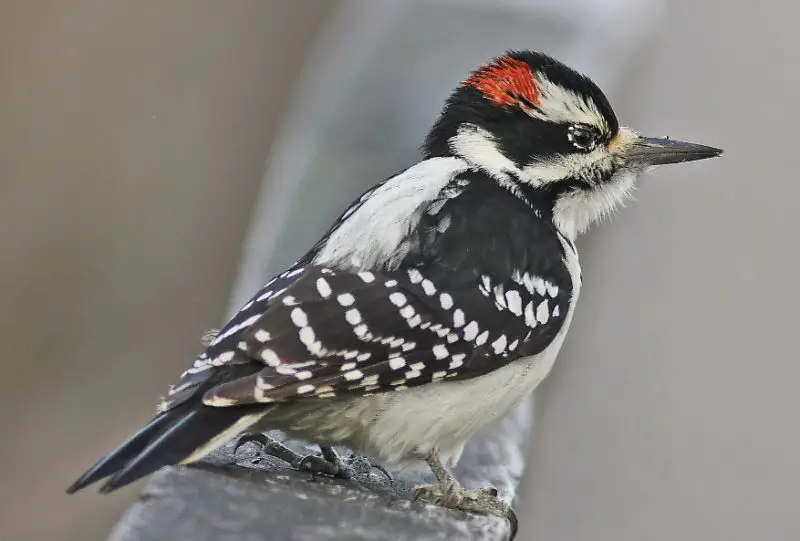
The Hairy Woodpecker is a medium-sized species that often shares the same range as the Downy but can be distinguished by its larger body (about 9 to 10 inches long) and longer bill. It features a crisp black-and-white pattern with a white back, black wings spotted with white, and a distinct black mask running through the eye. Males sport a red patch on the rear of the head, while females do not.
In Oregon, Hairy Woodpeckers inhabit mature forests, particularly those with large trees such as pines, firs, and spruces. They are also found in mountain regions, riparian woodlands, and occasionally in urban parks with tall trees. Their presence is often a sign of a healthy forest ecosystem since they feed on wood-boring insects that infest decaying wood.
Their behavior is methodical and deliberate compared to the more restless Downy Woodpecker. Hairy Woodpeckers hammer powerfully on trunks and large branches to reach insects hidden beneath bark. They also consume seeds, nuts, and suet, especially during winter. Their drumming is loud and steady, serving as both a communication and courtship tool.
This woodpecker nests in cavities it excavates in dead or decaying trees. In Oregon’s forests, Hairy Woodpeckers contribute to the natural cycle of decomposition by creating cavities that are later used by other bird species, such as nuthatches and chickadees. Their adaptability and strong foraging behavior make them year-round residents across most of the state.
Northern Flicker (Colaptes auratus)
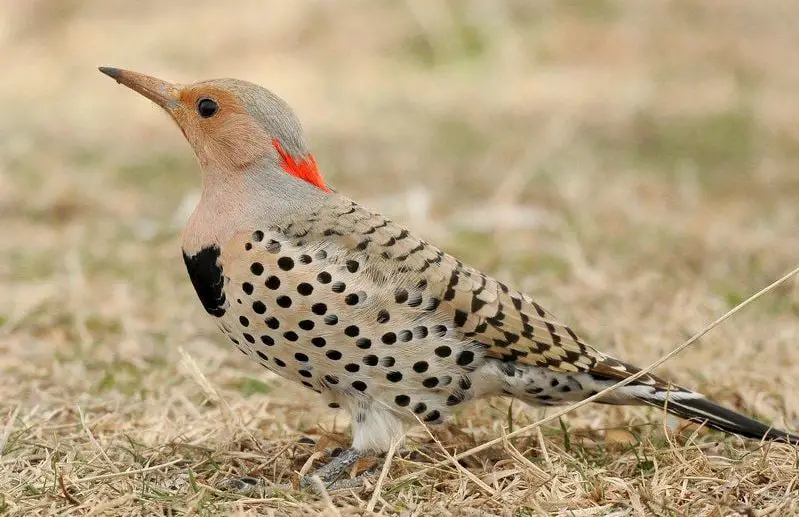
The Northern Flicker stands out as one of Oregon’s most colorful and easily recognizable woodpeckers. It measures about 11 to 12 inches in length and displays a beautiful mix of brown, black, and gray feathers with a distinctive spotted belly. The western form found in Oregon, known as the “Red-shafted Flicker,” shows reddish-orange underwings and tail feathers, while eastern birds have yellow ones.
Unlike most woodpeckers, Northern Flickers spend a lot of time on the ground, where they feed mainly on ants and beetles. Their long, slightly curved bills and sticky tongues are perfect for probing soil and logs for insects. They also eat berries and seeds when insect prey is limited, making them quite versatile in their diet. Their flight is strong and undulating, often accompanied by a sharp “kleer” call.
Northern Flickers are widespread throughout Oregon, from coastal forests to dry inland valleys. They prefer open woodlands, forest edges, and suburban parks with scattered trees and open ground. During spring, males can be seen drumming on metal surfaces or wood to announce their territory — a behavior often heard before the bird is seen.
These woodpeckers are cavity nesters, usually excavating their nests in dead trees or wooden structures. They are migratory in colder parts of Oregon but remain year-round in milder western regions. Their adaptability and stunning coloration make them a favorite among birdwatchers across the state.
Pileated Woodpecker (Dryocopus pileatus)
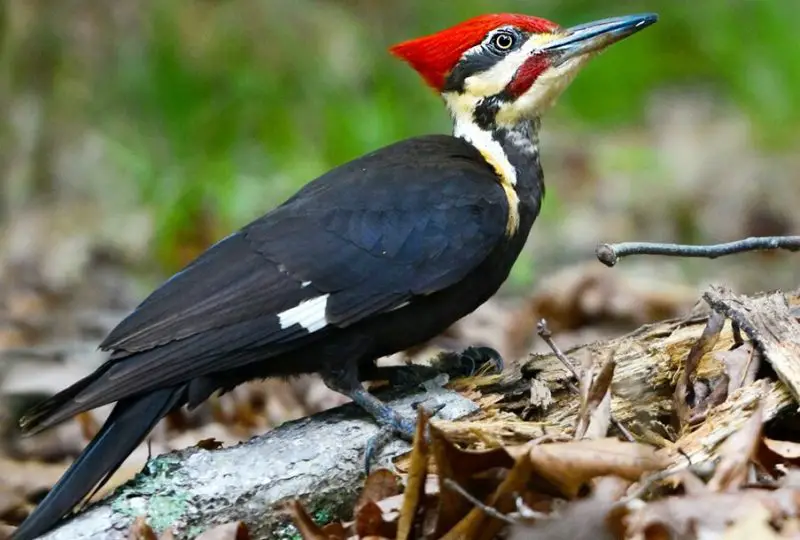
The Pileated Woodpecker is the largest woodpecker in Oregon and one of the most striking birds in North America. Measuring up to 19 inches long with a wingspan approaching 30 inches, it is easily recognized by its bold red crest, black body, and white facial stripes running down the neck. Its powerful bill is long and chisel-like, capable of tearing large chunks of wood from tree trunks.
These impressive birds inhabit mature forests throughout western and central Oregon, particularly in areas dominated by Douglas firs and western redcedars. They prefer old-growth or mixed forests with plenty of standing dead trees, which provide both food and nesting sites. Seeing a Pileated Woodpecker is often a thrilling experience due to its size and loud, echoing call that carries through the forest.
Their behavior is distinctive — they use powerful strikes to excavate deep rectangular holes in trees in search of carpenter ants and wood-boring beetles. These excavations leave behind large cavities that later serve as homes for owls, bats, and other birds. They are generally shy and elusive, often flying away quickly when disturbed.
In Oregon, Pileated Woodpeckers are most commonly seen in the Cascade Range, Coast Range, and along forested river valleys. They are less frequent in dry eastern regions but can still be found in riparian woodlands. Protecting mature forests is crucial for maintaining healthy populations of this magnificent species.
Red-breasted Sapsucker (Sphyrapicus ruber)
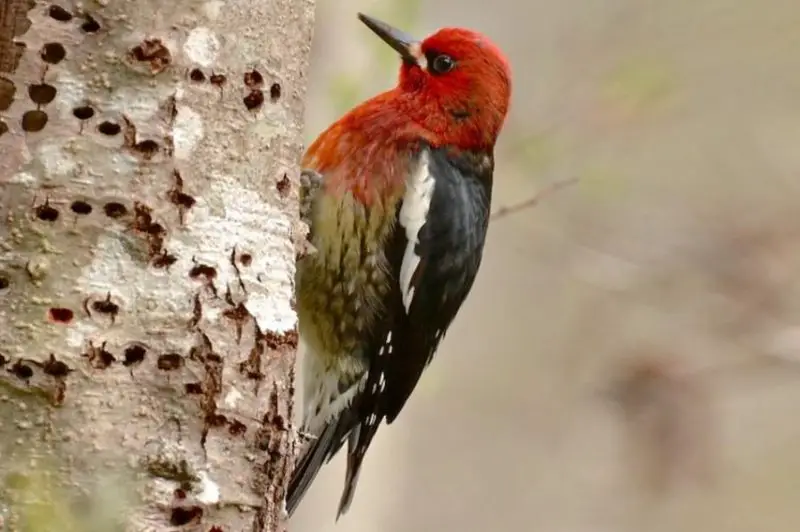
The Red-breasted Sapsucker is a vibrant and medium-sized woodpecker native to the Pacific Northwest. Measuring about 8 to 9 inches long, it displays a bright red head and breast that fade into a yellowish belly. Its wings are black with white barring, and it has a white vertical stripe running along each side of its body. Its colorful plumage makes it one of Oregon’s most visually striking woodpeckers.
This species is named for its unique feeding habit — it drills rows of small holes in tree bark to access sap, which it consumes along with trapped insects. Common host trees include alders, birches, and firs. The bird often revisits the same trees to maintain its sap wells and may even defend them aggressively from other birds.
In Oregon, the Red-breasted Sapsucker is common in coastal and western mountain forests, particularly in moist coniferous and mixed woodlands. It can also be found in parks, orchards, and forest edges during the breeding season. During winter, it may move to lower elevations or even into urban areas with mature trees.
Behaviorally, Red-breasted Sapsuckers are less noisy than other woodpeckers but can still be heard drumming during mating season. Their presence benefits many other species, as hummingbirds and warblers often feed on the sap from their wells. This makes them a keystone species in Oregon’s forest ecosystems.
Red-naped Sapsucker (Sphyrapicus nuchalis)
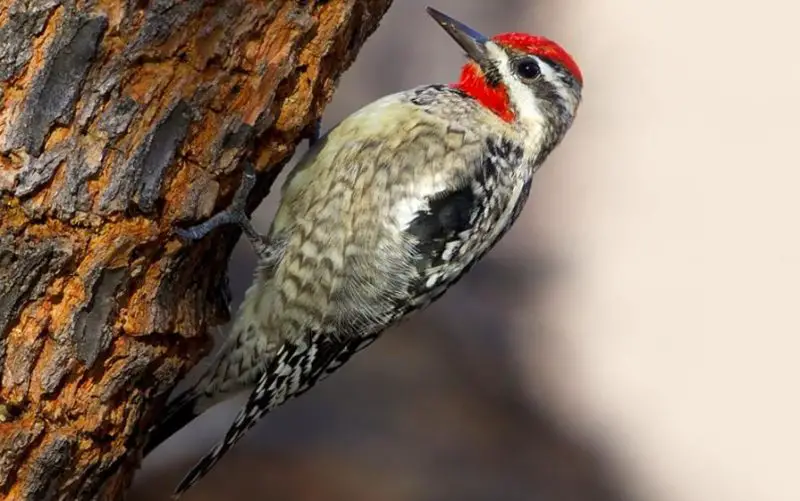
The Red-naped Sapsucker is a medium-sized woodpecker that can be found across eastern and central Oregon, particularly in forested mountain regions. It measures around 8 to 9 inches in length and features a striking black-and-white body with a bright red crown and nape. A white stripe runs down each side of its face, and the throat is red in males but white or lightly tinged in females. This bird’s vivid markings and patterned plumage make it easy to distinguish from similar species.
Red-naped Sapsuckers are best known for their unique feeding technique — drilling neat rows of small holes, called sap wells, into tree bark. They feed on the sugary sap that flows from these holes and also consume insects trapped within it. Trees commonly used for feeding include aspens, birches, and pines, which provide both sap and nesting sites. Their feeding activity often leaves a noticeable grid-like pattern on tree trunks.
In Oregon, these sapsuckers are typically found in mixed woodlands, especially where deciduous and coniferous trees coexist. They are most abundant in the Blue Mountains, Wallowa Mountains, and other eastern forested regions. During migration, some may move westward toward lower elevations and valleys. They prefer cooler, moist environments and are often seen along rivers and mountain slopes.
Red-naped Sapsuckers are vocal birds, producing a harsh mewing call and rhythmic drumming during courtship. They nest in cavities they excavate in soft or decayed trees, often reusing the same site in subsequent years. Their sap wells benefit other species, including hummingbirds and warblers, which also feed from the oozing sap.
Williamson’s Sapsucker (Sphyrapicus thyroideus)
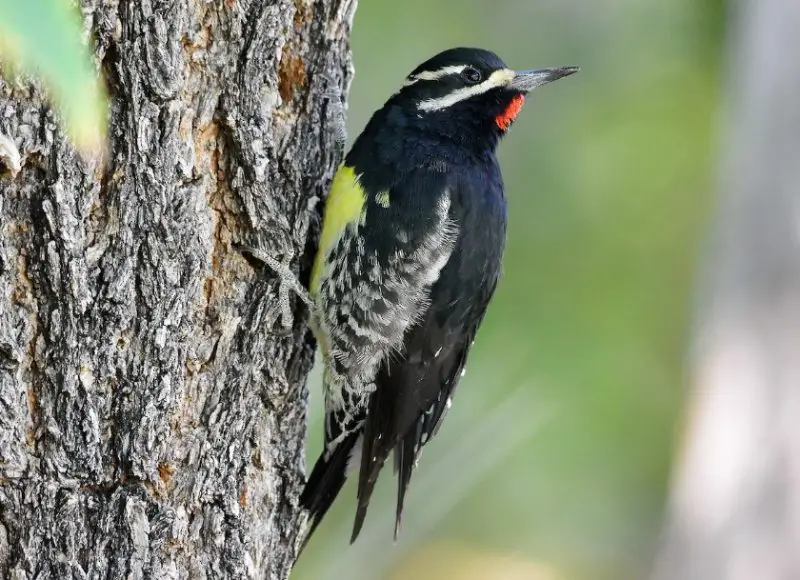
Williamson’s Sapsucker is one of Oregon’s most visually distinct woodpeckers, notable for its striking sexual dimorphism. Males have a glossy black back, chest, and head with a vivid red throat and yellow belly, while females display a barred brown back, black chest patch, and white face stripes. Both sexes measure about 8 to 9 inches long, with strong bills suited for drilling sap wells and foraging for insects.
In Oregon, this species is found primarily in montane coniferous forests, especially those dominated by ponderosa pines, firs, and spruces. They favor open forest areas with a mixture of mature trees and standing dead wood for nesting. Williamson’s Sapsuckers are less common than other sapsuckers and are most often observed in the eastern Cascades, Blue Mountains, and central highlands.
Their feeding behavior centers around drilling holes to collect sap, but they also prey on ants and beetles, particularly during the breeding season when feeding young. In winter, they may rely more on sap and fruit, showing remarkable adaptability to seasonal changes in food availability. Males and females often forage separately, using different tree species or areas within the same habitat.
These woodpeckers are cavity nesters, excavating holes in soft or decayed wood. Their strong territorial instincts lead them to defend feeding and nesting sites aggressively. In Oregon’s forests, their presence indicates healthy ecosystems with mature trees and ample insect populations. Observing a Williamson’s Sapsucker is a treat for birders, especially during early spring when males display their bright plumage in sunlight.
White-headed Woodpecker (Dryobates albolarvatus)
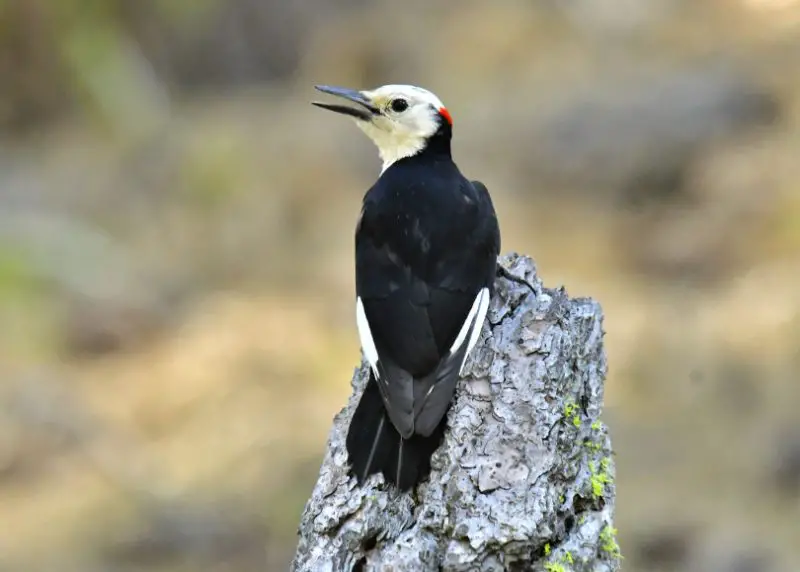
The White-headed Woodpecker is a striking black-and-white bird native to the pine forests of Oregon. Measuring about 8 to 9 inches in length, it has a pure white head contrasting sharply with its glossy black body and wings. Males also sport a small red patch on the back of the head. Its bold appearance and quiet nature make it one of the most sought-after species for birdwatchers in the Pacific Northwest.
Unlike most woodpeckers, the White-headed Woodpecker relies heavily on pine seeds rather than insects. It uses its bill to pry open pine cones, feeding on the nutritious seeds inside. It also eats insects found beneath bark and occasionally drinks sap from tree wounds. This diet ties the species closely to pine ecosystems, especially ponderosa and Jeffrey pines found in Oregon’s central and southern regions.
In Oregon, White-headed Woodpeckers are commonly seen in dry, open pine forests east of the Cascade Range. They prefer mature stands with scattered large pines and fallen logs, which provide food and nesting opportunities. They are usually found at mid to high elevations, though some descend to lower forested areas during winter.
These birds are relatively quiet compared to other woodpeckers, often detected by their soft tapping sounds rather than loud drumming. They nest in cavities they excavate in dead trees or snags. Because of their dependence on mature pine forests, they are considered sensitive to logging and habitat loss, making conservation of old-growth pine ecosystems vital for their survival in Oregon.
Black-backed Woodpecker (Picoides arcticus)
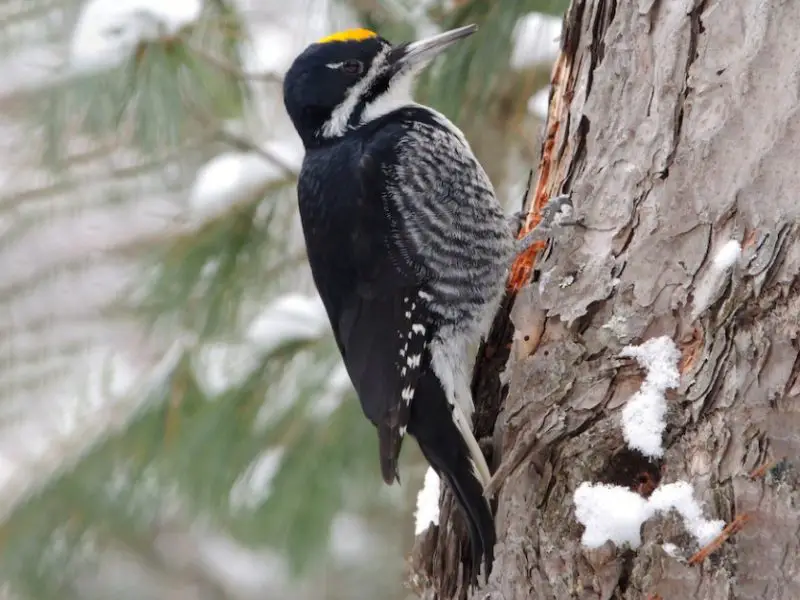
The Black-backed Woodpecker is a dark, medium-sized species found mainly in Oregon’s burned or recently disturbed coniferous forests. It measures around 9 inches long and has an entirely black back, wings, and tail, with a white belly and barred flanks. Males have a bright yellow crown patch that stands out against the glossy black plumage. This unique coloration provides excellent camouflage against charred tree bark.
This woodpecker specializes in foraging within burned forests, where it hunts wood-boring beetle larvae beneath the bark of dead trees. Its long, chisel-like bill and strong neck muscles allow it to strip away bark efficiently. By feeding on beetles that thrive in post-fire environments, the Black-backed Woodpecker plays a critical role in balancing insect populations and aiding forest recovery.
In Oregon, these birds are found primarily in the eastern and central parts of the state, particularly following forest fires in the Cascades and Blue Mountains. They prefer recently burned areas with abundant standing dead trees, usually within a few years after a wildfire. Their presence is often short-lived, as they move to newer burn sites when insect populations decline.
Behaviorally, the Black-backed Woodpecker is quiet and secretive, often clinging motionless to tree trunks. Its calls are sharp and infrequent, and it rarely visits feeders. Because it depends on post-fire habitats, conservation of burned forests is essential to maintaining stable populations in Oregon’s dynamic forest ecosystems.
American Three-toed Woodpecker (Picoides dorsalis)
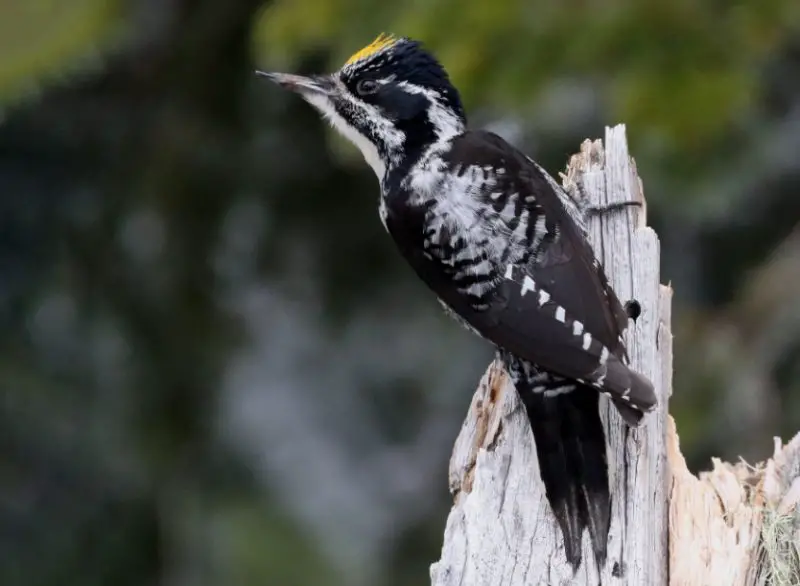
The American Three-toed Woodpecker is a fascinating species adapted to cold northern and mountainous forests, including parts of northeastern and central Oregon. It measures about 8.5 inches long and is easily identified by its barred black-and-white plumage, white back, and yellow forehead patch (in males). True to its name, it has only three toes instead of the usual four found in most woodpeckers, an adaptation for gripping tree bark more efficiently.
This woodpecker primarily feeds on wood-boring beetle larvae, which it finds in dead or dying trees. It chips away bark in narrow strips rather than large holes, leaving distinct feeding marks. It is particularly drawn to forests affected by insect outbreaks or fires, where food sources are abundant. It may also consume ants and other insects during warmer months.
In Oregon, the American Three-toed Woodpecker inhabits high-elevation conifer forests, especially in the Blue Mountains, Wallowas, and Cascade Range. It prefers spruce, fir, and lodgepole pine forests that experience periodic disturbances such as beetle infestations or wildfires. These environments provide a continuous supply of decaying wood for foraging and nesting.
Unlike many woodpeckers, the American Three-toed Woodpecker is quiet and solitary. Its drumming is slow and irregular, and it rarely calls except during breeding season. Its dependence on disturbed forests makes it an indicator species of forest health and regeneration in Oregon’s mountain ecosystems, highlighting the importance of natural forest cycles.
Lewis’s Woodpecker (Melanerpes lewis)
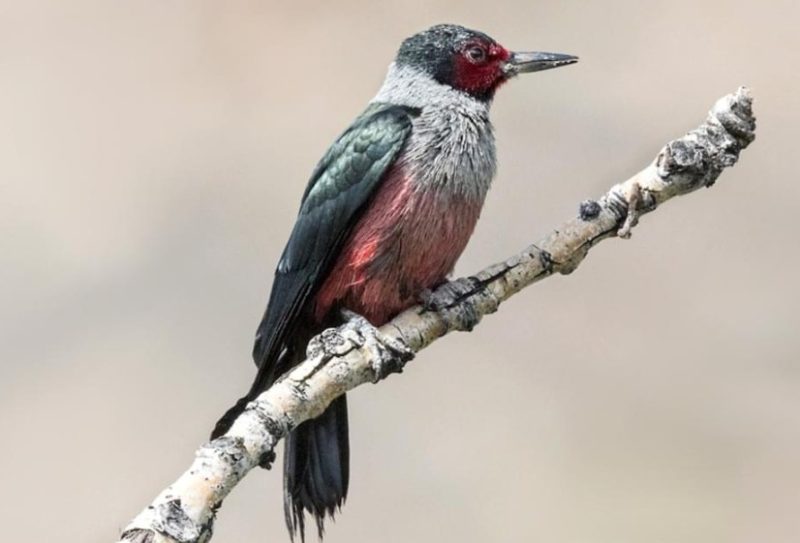
The Lewis’s Woodpecker is one of the most striking and unusual woodpeckers in Oregon, both in appearance and behavior. Measuring about 10 to 11 inches long, it features dark greenish-black upperparts, a pinkish belly, and a gray collar that separates its crimson face from the rest of the plumage. Unlike most woodpeckers, it has a smooth, glossy look with minimal barring and spends much of its time in flight rather than clinging to tree trunks.
In Oregon, Lewis’s Woodpeckers inhabit open ponderosa pine forests, oak woodlands, and riparian groves, particularly in central and southern regions. They prefer areas with scattered trees and open ground for foraging. These birds are often found along river valleys, burned forests, and semi-arid plateaus where dead snags and insect-rich woodlands provide ideal feeding and nesting sites.
Their feeding habits differ significantly from most other woodpeckers. Instead of drilling for insects, Lewis’s Woodpeckers often catch flying insects in midair — a behavior more typical of flycatchers. They also consume acorns, nuts, and fruits, storing food in tree crevices for later use. During fall and winter, they may gather in flocks to feed on acorns and other seeds, demonstrating remarkable social and caching behavior.
Lewis’s Woodpeckers are cavity nesters, excavating holes in decaying trees or reusing old woodpecker nests. They are partial migrants, often moving to lower elevations during winter. In Oregon, their populations fluctuate depending on food availability and fire cycles, but they remain one of the state’s most charismatic woodpecker species, admired for their graceful flight and colorful plumage.
Acorn Woodpecker (Melanerpes formicivorus)
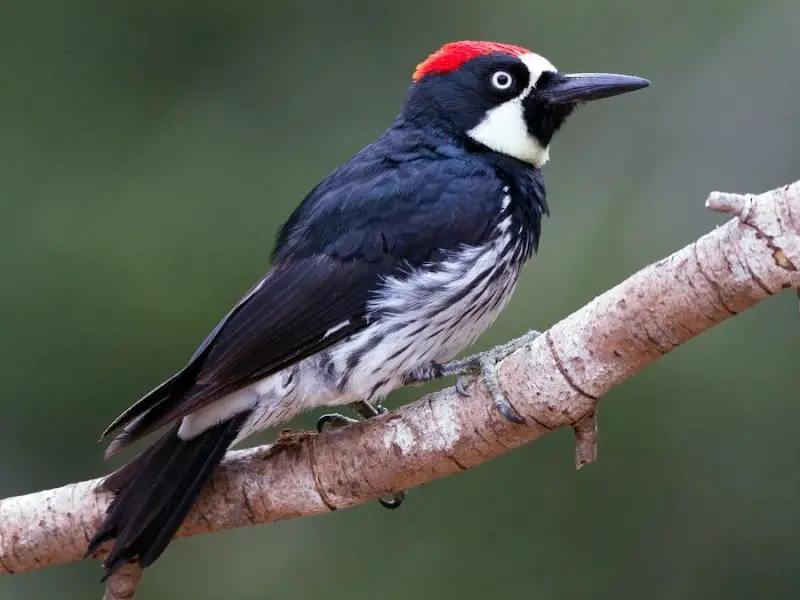
The Acorn Woodpecker is one of the most social and distinctive woodpeckers found in Oregon, particularly in the oak woodlands of the southwestern part of the state. Measuring around 8 to 9 inches in length, it is instantly recognizable by its bold facial pattern — a black back, white face, bright red crown, and white rump visible during flight. Its clown-like appearance and lively behavior make it a favorite among birdwatchers.
This species is famous for its habit of storing acorns in granary trees. These are trees — often dead or partially alive oaks or pines — into which the birds drill thousands of small holes to store acorns for winter. They live in cooperative family groups that defend these granaries year-round, often returning to the same site for generations. Their loud “waka-waka” calls and constant activity make them one of the most vocal woodpeckers in the region.
In Oregon, Acorn Woodpeckers are most commonly found in the oak savannas and foothills of the Rogue and Umpqua Valleys. They prefer mixed oak-pine habitats and areas with plentiful acorn supplies. During colder months, they rely heavily on their stored acorns, but they also eat insects, fruits, and sap when available. Their social structure is complex, with multiple individuals helping raise young within a single group.
These woodpeckers are cavity nesters, excavating holes in dead trees or snags near their granary sites. Because they rely on mature oak ecosystems, habitat loss due to land conversion or fire suppression poses a threat to their populations. Conservation of oak woodlands is essential to ensuring that these lively and intelligent birds continue to thrive in Oregon.
Gila Woodpecker (Melanerpes uropygialis) (rare visitor in southern Oregon)
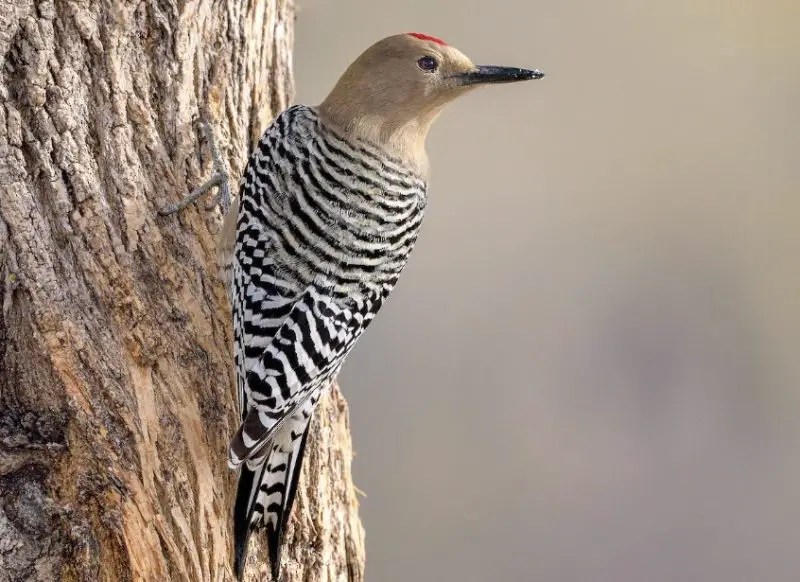
The Gila Woodpecker is a rare and occasional visitor to southern Oregon, typically residing farther south in the deserts of the American Southwest. It measures about 9 to 10 inches in length and has a distinctive tan body with black-and-white barred wings and tail. Males have a small red patch on the crown, while females lack this marking. Its light-colored plumage helps it blend into arid environments where vegetation is sparse.
This species is strongly associated with desert habitats, especially areas dominated by saguaro cacti, mesquite, and palo verde trees. In Oregon, rare sightings occur near the southern border during migration or unusual climatic shifts. When present, it often inhabits dry scrublands or riparian corridors that resemble its native desert ecosystems. Its adaptability allows it to exploit a variety of nesting and feeding opportunities in these warmer microclimates.
The Gila Woodpecker’s diet includes insects, fruits, seeds, and nectar. In its typical desert habitat, it often feeds on cactus fruits and occasionally visits hummingbird feeders. It also excavates cavities in saguaro cacti or dead trees, which later become nesting sites for other desert species like elf owls and kestrels. When visiting Oregon, it exhibits similar foraging behaviors, focusing on insects and soft fruits.
Though not a resident species, the Gila Woodpecker’s rare appearances in Oregon highlight the state’s ecological diversity and the potential effects of shifting climate zones on bird distribution. Birders consider it a prized sighting when observed in the southern deserts near the California border. Its adaptability and resilience make it a fascinating outlier among Oregon’s more forest-dwelling woodpeckers.
Tips for Watching and Attracting Woodpeckers in Oregon
Watching woodpeckers in Oregon can be a rewarding experience, as these birds are active, vocal, and often easy to observe once you know where to look. The following tips will help you attract and enjoy woodpeckers safely in your yard or during hikes through the state’s forests.
Choose the Right Habitat
Woodpeckers are naturally drawn to mature forests, wooded parks, and areas with standing dead trees. In Oregon, explore regions with pine, oak, or fir trees for the best chances of spotting them. If you have property with old or decaying trees, consider leaving some snags standing — these provide critical nesting and feeding sites for many woodpecker species.
Offer Food Sources
To attract woodpeckers to your yard, provide suet feeders, peanuts, and black oil sunflower seeds. Suet blocks are particularly effective in winter when insects are scarce. Northern Flickers and Lewis’s Woodpeckers also enjoy fruits and mealworms. Avoid insecticides and pesticides in your garden, as these chemicals reduce the birds’ natural food sources.
Provide Water and Nesting Sites
A simple birdbath or water fountain can attract woodpeckers year-round, especially during Oregon’s dry summer months. You can also install nest boxes designed for medium-sized woodpeckers such as Downy or Hairy Woodpeckers. Make sure the entrance holes match the target species’ size and place the boxes on trees or poles about 10 to 20 feet above the ground.
Respect Their Space
When observing woodpeckers in the wild, use binoculars or a camera zoom lens instead of approaching nests or drumming trees. Sudden movements can scare them away or disrupt their feeding. Spring and early summer are the best seasons for watching breeding pairs and listening to their drumming calls echoing through Oregon’s forests.
FAQs about Woodpeckers in Oregon
How many types of woodpeckers are there in Oregon?
Oregon is home to 13 regularly occurring woodpecker species, ranging from the small Downy Woodpecker to the large and striking Pileated Woodpecker. The diversity of habitats — from coastal rainforests to dry eastern pine woodlands — supports this wide variety of species.
What is the most common woodpecker in Oregon?
The Downy Woodpecker and Northern Flicker are the most common species across the state. Both are adaptable and can be seen in cities, parks, and rural woodlands year-round. They frequently visit backyard feeders, especially when suet is available.
Which woodpecker makes the loudest drumming sound?
The Pileated Woodpecker is known for its powerful and echoing drumming, which can be heard from great distances. It uses its strong bill to carve large rectangular holes into trees, often in search of carpenter ants and beetle larvae.
Are there any rare woodpeckers in Oregon?
Yes, the Gila Woodpecker is considered a rare visitor, occasionally appearing in the southernmost parts of the state. The White-headed Woodpecker and Black-backed Woodpecker are also less commonly seen and are usually found in specialized habitats such as pine forests or recently burned areas.
Do woodpeckers damage trees or homes?
Woodpeckers rarely harm healthy trees. Their pecking helps control insects and promotes forest health. However, they may occasionally drum on wooden houses or metal structures to mark territory or attract mates. To deter this, homeowners can hang reflective ribbons or mesh netting near the affected areas.
When is the best time to see woodpeckers in Oregon?
Woodpeckers are active year-round, but spring and early summer are ideal for observing courtship displays, drumming, and nesting behaviors. Many species become more visible and vocal during these months, especially in Oregon’s forested and riparian areas.
What should I do if I find a baby woodpecker on the ground?
If the bird appears healthy, it’s best to leave it alone — its parents are likely nearby. Fledgling woodpeckers often spend time on the ground while learning to fly. If it seems injured or in danger, contact a local wildlife rehabilitator or bird rescue center for assistance.
Do woodpeckers migrate from Oregon in winter?
Most of Oregon’s woodpeckers are permanent residents, including Downy, Hairy, and Pileated Woodpeckers. However, species like the Red-naped Sapsucker and Lewis’s Woodpecker may migrate to lower elevations or southern areas during colder months.

